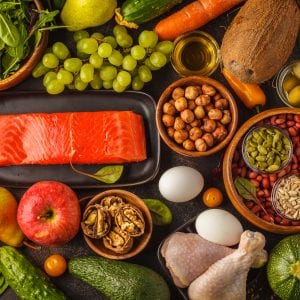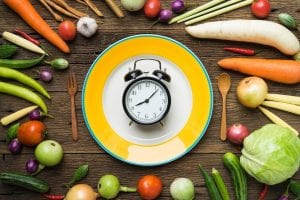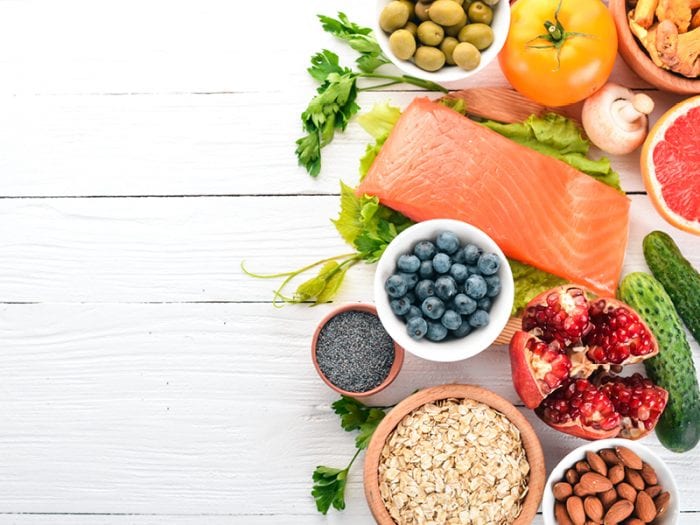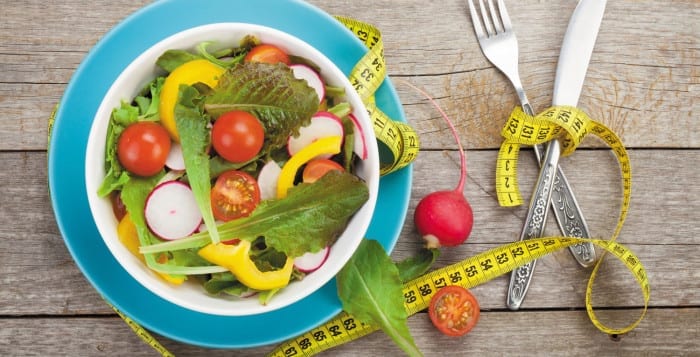Making sense of the latest health trends
By Melissa Arnold
Low fat or full fat? Splenda, stevia or cane sugar? Three large meals or six small ones? New schools of thought and trends surrounding healthy eating are cropping up all the time, and it’s easy to feel overwhelmed or confused, especially when the advice is conflicting.
Whether you’ve been using a particular weight loss plan with accurate information is key. Dr. Konstantinos Spaniolas, Associate Director of the Stony Brook Medicine Bariatric and Metabolic Weight Loss Center, has given us his take on three of the most popular diet trends, the Ketogenic Diet, Clean Eating and Intermittent Fasting.
The Ketogenic Diet
(also known as keto)
The basics: The keto diet uses the body’s metabolic processes to its advantage. In keto, carbs are drastically limited, which lowers glucose and insulin levels. Without glucose to use as its typical fuel, the body enters a state called ketosis, where fat is burned almost exclusively. Lots of unsaturated (healthy) fats, dairy products and moderate amounts of protein are central to going keto. Say goodbye to carbs and sugar, not only in forms like bread and pasta, but also in most fruits and some vegetables.
What it’s like: Tom Walheim, Sr., a 56-year-old engineer from Mullica Hill, N.J., started to search for a diet plan in 2018 when he acknowledged he wasn’t feeling as good as he did when he was younger. After trying other diets, he chose keto because it was easy to implement and would fit in well with his lifestyle. All three of Walheim’s children have celiac disease, so their home was already gluten free.
“Having already eliminated carbs, I had already separated myself from the things that would be tough for a lot of people to give up,” Walheim said. The first 15 pounds came off quickly, and within about six months he’d lost 40 pounds. Ultimately, Walheim has maintained a ketogenic diet for more than two years and plans to continue.
“I love to grill, and I’ve rediscovered cooking through learning different keto recipes, like Instant Pot chili. And I’ve never felt deprived — I will occasionally have a cheat day when celebrating a special occasion with my family. For example, I enjoyed the cake at my daughter’s wedding this fall.”
Pros: Weight loss can be significant and quick, especially early on. Lovers of fatty foods can enjoy plenty of their favorites — keto is sometimes nicknamed the “butter and bacon diet.”
Cons: It takes time for the body to adjust to going keto, and you may feel moody, groggy, constipated or just unwell. The body can rebel when you begin to transition off of keto as well, causing gastrointestinal issues and even weight gain.
Dr. Spaniolas’ take: “In the keto diet, there’s an introductory week that is very low calorie, and that can be a problem for some people. With any diet that restricts certain foods, you can expect a period of adjustment, but most people tolerate it well. It’s important to stay well-hydrated to minimize risk of constipation and boost your overall wellbeing.
Clean Eating

(also known as the Paleo Diet or Whole30, among others)
The basics: Generally speaking, eating clean is about sticking to foods that are in their natural, whole or unprocessed form. According to the Paleo Diet’s official website, this healthy eating strategy emphasizes foods eaten by our hunter-gatherer ancestors. That means lots of veggies, fruits, meat, eggs and some fats and oils are in, whole grains, dairy, processed foods and refined sugars are out. Different plans will vary their lists of acceptable foods.
What it’s like: As a captain in the U.S. Air Force, Gemma Fiduk works hard to ensure she remains healthy and fit. When it comes to dieting, she takes a balanced approach of eating well-rounded, nutritious meals along with occasional treats.
“In 2015, I was stationed in Little Rock, Arkansas. I was a physical training officer at the time, so I was trying to take a lot of courses on fitness and nutrition to better support my airmen,” said Fiduk, who’s now stationed in Fairborn, Ohio. “The gym on base offered a lot of different seminars and workshops, and one of them was about Whole30.”
Armed with information from the seminar and the official Whole30 book by Melissa Hartwig Urban, Fiduk said she was excited to give the program a try.
“The program doesn’t hide that it takes discipline, but they prepare you well for the experience and I love a good challenge. Besides, it’s only 30 days,” she said. “I came away with a better understanding of my own body and the foods that were and weren’t best for me.”
While she didn’t weigh herself after completing Whole30, Fiduk noted a definite reduction in bloating and positive changes in her figure. After the initial cravings passed, she loved the sense of physical wellbeing and accomplishment that came along with cooking at home.
She admits that it can be easy to fall into eating the same meals repetitively or feeling bored with the menu, but said it’s easy to find a wealth of clean recipes online for those willing to look. The Whole30 website offers meal planning and grocery delivery services for a fee.
Pros: In the case of Whole30, the diet has a defined start and end date.
Cons: Lots of advance planning and shopping is required, and finding compliant ingredients or condiments can be tricky in regular grocery stores.
Dr. Spaniolas’ take: “The idea with clean eating is to take yourself back to the most basic nutrients. It’s less about weight loss than it is about overall wellbeing, and in the case of Whole30, it’s not meant to be a forever plan — you take it on for a set period of time and then return to eating normally.
Intermittent Fasting

(Also known as intermittent energy restriction)
The basics: Fasting is as simple as it sounds — not eating anything for a set period of time. By restricting the time spent eating, the body is said to better regulate blood sugar and increase the ability to burn fat. Options abound with fasting, including daily fasts of 12 to 20 hours, restricting eating hours only on certain days, or not eating at all for one or two days each week. During eating periods, a normal diet is consumed — calories are not restricted.
Pros: You can eat whatever you want — there are no forbidden foods. Fasting requires little preparation and can be started and stopped as your lifestyle requires.
Cons: Getting used to hunger pangs can be tough, and social situations might be hard to deal with if you’re the only one not eating.
What it’s like: Jeena Rudy, 26, of Setauket, was a college athlete and swim coach in her native California before becoming a missionary three years ago. She admitted her work with college students can make it too easy to make unhealthy food choices or overeat.
“One of my brothers is two years older than I am, and a few years ago he mentioned that his cholesterol was too high,” Rudy said. “I started to gain a little weight once I wasn’t swimming 40 hours a week, and I didn’t want to end up developing health issues. That conversation really motivated me to try intermittent fasting.”
Rudy fasted daily for 16 to 20 hours over a period of several months. She ultimately lost some weight and said she became more mindful about what she was eating.
“Fasting changed the way I think about food. I learned more about what foods help me to feel my best, too. Like right now I need to eat breakfast and could just grab a bagel, but making eggs would be a better, healthier option for me. I’m planning to take up fasting again in the future.”
Dr. Spaniolas’ take: “Again, staying hydrated will help you in fasting because it can quell hunger pains by keeping something in your stomach. I tell people to aim for at least 64 ounces a day, and if they can get closer to 100 ounces, that’s even better. Very low caloric plans, where people consume 600 calories a day for extended periods of time, should only be done under medical supervision, especially if you have health issues.
The best dietary plan is the one that works well for you. But just because a particular plan works well for one person doesn’t mean it will be the right one for someone else. For some people, giving up carbohydrates is easy, while others can’t give up fruits or go longer periods without eating. It’s about finding what fits best with your preferences, habits and lifestyle, and ultimately whether or not you can stick with it.
Try something out for a week or two and see how you like it, but don’t combine diets. For some, dieting isn’t the best way to lose weight. If you’re having difficulty losing weight on your own, checking in with a physician to consider more targeted options can help. Remember to stay active as well, aiming for at least 10,000 steps a day or 30 minutes of exercise several times a week.”
Remember to talk with your doctor before making any significant changes to your diet or exercise routine.







